In the past, we introduced a number of different overcoats such as the Ulster, the British Warm or the Guard’s Coat.
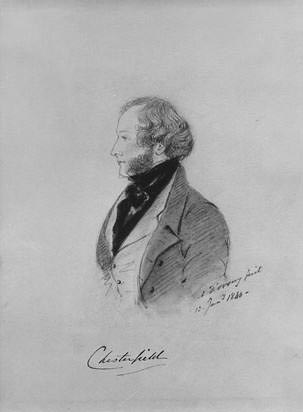
Today, I would like to introduce the Chesterfield – one of the most famous overcoats. At one point, every gentleman needed it in his closet and hence, I want to provide some insight into its history and characteristics.
Chesterfield Overcoat History
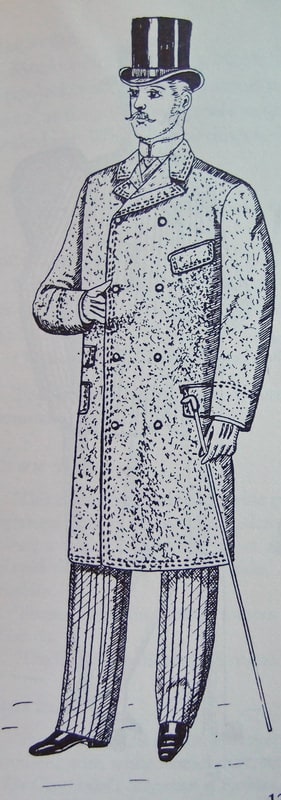
Surprisingly, there are quite a number of sources that claim the Chesterfield was first worn by Philip Stanhope, the 4th Earl of Chesterfield, who supposedly wore it in the early 1800’s. However, topcoats were not quite yet in existence.
It remains unclear when exactly the Chesterfield overcoat was tailored for the first time. However, it is certain that George Stanhope, 6th Earl of Chesterfield, who invented this coat in the mid 19th century.
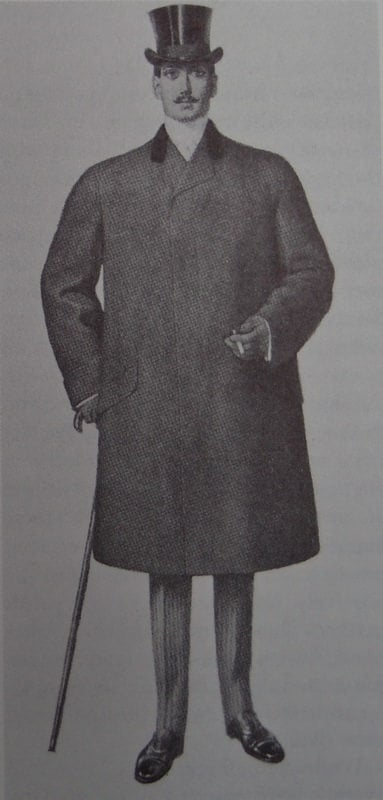
Apparently, the Earl was part of a group of dandies, including Lord Byron and Count d’Orsay, who were the forerunners of a movement that changed the elaborate Regency era men’s fashion of the day to the less decorative Victorian style.
In the 1830’s, men usually only wore body coats, such as frock coats or morning coats,that were cut very closely to the body and were designed to be worn outside as well as inside. No proper gentleman would have dared to take off his coat in public.
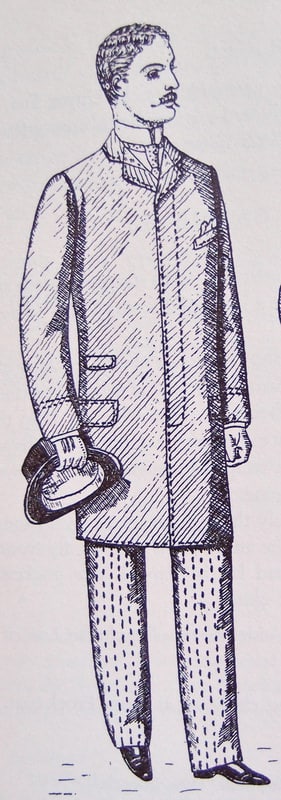
The 6thEarl of Chesterfield seems to have been the father of the overcoat as we know it today! It was designed to be worn on top of another garment when outside and supposed to be taken off once inside.
Chesterfield Characteristics
Since the Chesterfield was likely the first overcoat, soon all kinds of overcoats – no matter whether single breasted or double breasted – were referred to as Chesterfield. Even in the 20th century, all single breasted overcoats in Germany were characterized as a Chesterfield!
As you can see in the pictures, there was no particular Chesterfield cloth, but much rather it was made from all kinds of heavy fabrics, in different patterns. However, the classic version is heavy, plain, black or charcoal fabric.
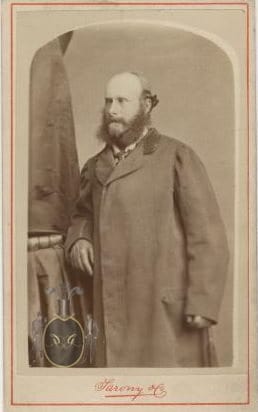
As such, it does not surprise that the Handbook of English Costume in the Nineteenth Century refers to all kinds of overcoats in varies shapes as Chesterfields.
However, the original Chesterfield overcoat seems to have been a dark (probably black) single breasted overcoat with a velvet collar and most importantly characterized by a lack of a waist seam. Until then, all the body coats had waist seams in order to guarantee a close fit. The Chesterfield, on the other hand, was to be worn more loosely over another garment and hence did not require waist seams.
Luckily, I was able to find a photograph from George Stanhope, the 6th Earl of Chesterfield, that was taken around 1860. In this portrait he in fact wears a Chesterfield overcoat!
It features:
- No waist seams or front darts
- Single Breasted fly front
- Short, notched lapel
- Velvet collar
- Straight side pockets – it looks like a flap pocket but it could be a jetted pocket
- No cuffs
- Probably a single back vent and an otherwise plain back
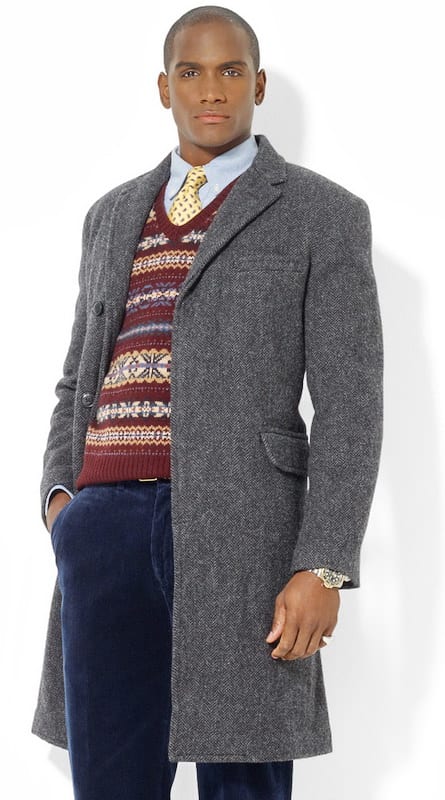
Throughout the last 150 years, the details of the Chesterfield have certainly changed. Pockets evolved and disappeared, just as silk facings and side seams. The length of the Chesterfield was sometimes shorter and then longer, then worn looser or variously more fitted.
Nevertheless, the basic characteristics of a Chesterfield – as outlined above – have endured until today, although some people prefer their overcoat without the velvet collar. Interestingly, some claim the fashion of black velvet collars evolved during the French Revolution, when members of the British aristocracy introduced them as a sign of mourning for their noble relatives who had been executed in France.
Today, the classic Chesterfield Coat is still in existence, though others like the Covert Coat seem to have outgrown the Chesterfield in popularity.
Historically, the Chesterfield remains to be a very important overcoat since it was the first of its kind and subsequently, inspired the designs of other topcoats, including the Covert Coat – which we will present to you in detail next week.
What Chesterfield variation do you like the most? Would you wear one?
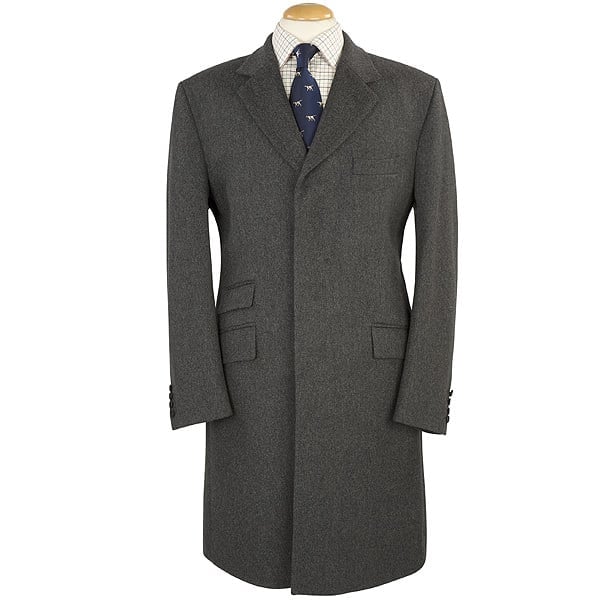

I consider myself luckty to own two chesterfield overcoats. One of them looks rather like the coat in the photograph of the earl himself, but without the velvet collar. The other one much more resembles the tailored version in the picture with the caption ‘Modern Single Breasted Chesterfield’, and it does have a velvet collar, which I absolutely love.
I love wearing them both, preferably without buttoning them up (weather and other circumstances allowing), since I feel it highlights the clothes worn underneath. The fit of the second one is rather snug, so I can’t really wear a jacket underneath, but its cut almost allows me to wear it as a jacket in its own right, akin to the Teddy Boy jackets from the fifties.
Dear Yannick,
Nice to hearing from you again! I am glad you enjoy your Chesterfield overcoats. Do you happen to have a few pictures of you wearing them?
This is the first article I’ve read. I just found this website. I think I found what I’ve been looking for! Thank you for this article and please continue to provide useful information about men’s clothing including historical origins of formal/dress/business wear, the specific guidelines followed by tailors at the time, the reasons for those rules, and the current state of the subject clothing. Thank you!
Thanks for your kind words Bevi. We will continue to write high quality articles.
Dear Sven,
I apologise for the tardiness of my reply. I have not looked into the Gentleman’s Gazette since I posted my comment, so I only saw your request today. I am not sure whether I have any photographs. I shall have a look and I will inform you as soon as I know more.
Before that, however, I shall delve into the article about the covert coat.
Kind regards,
Yannick